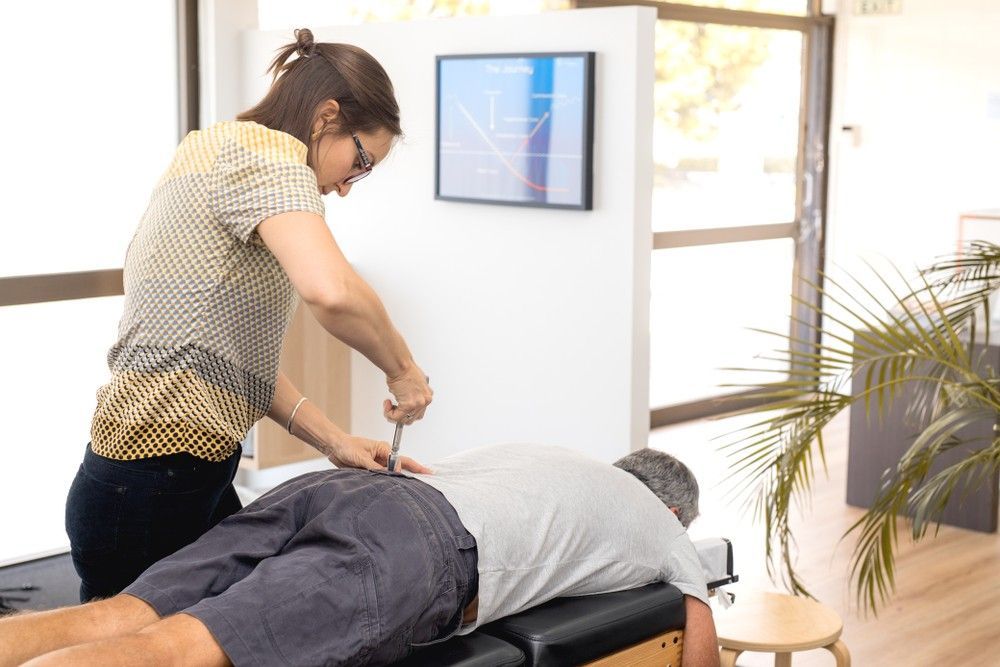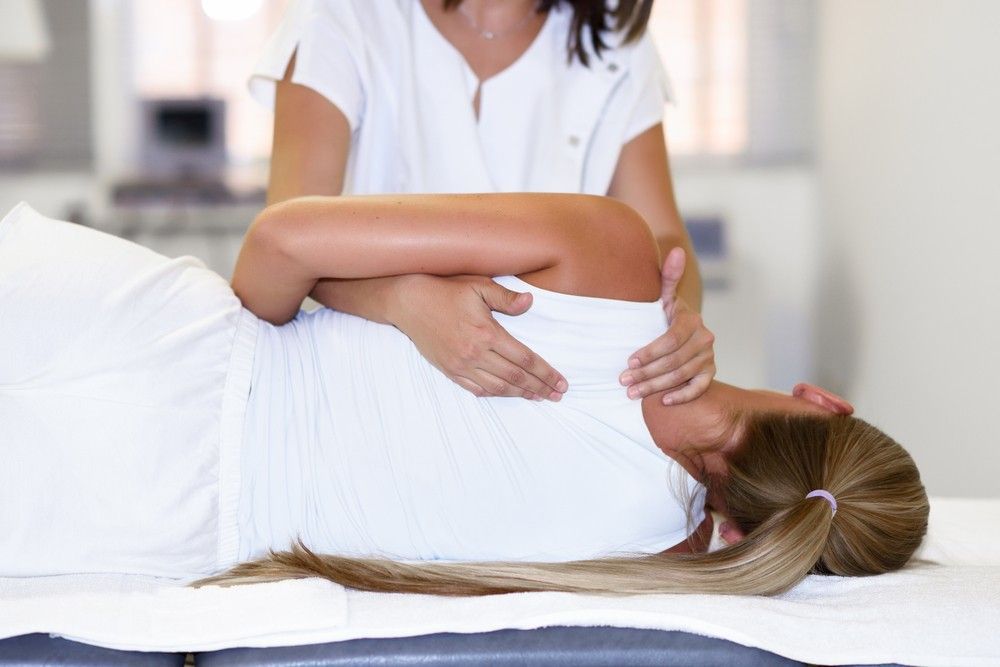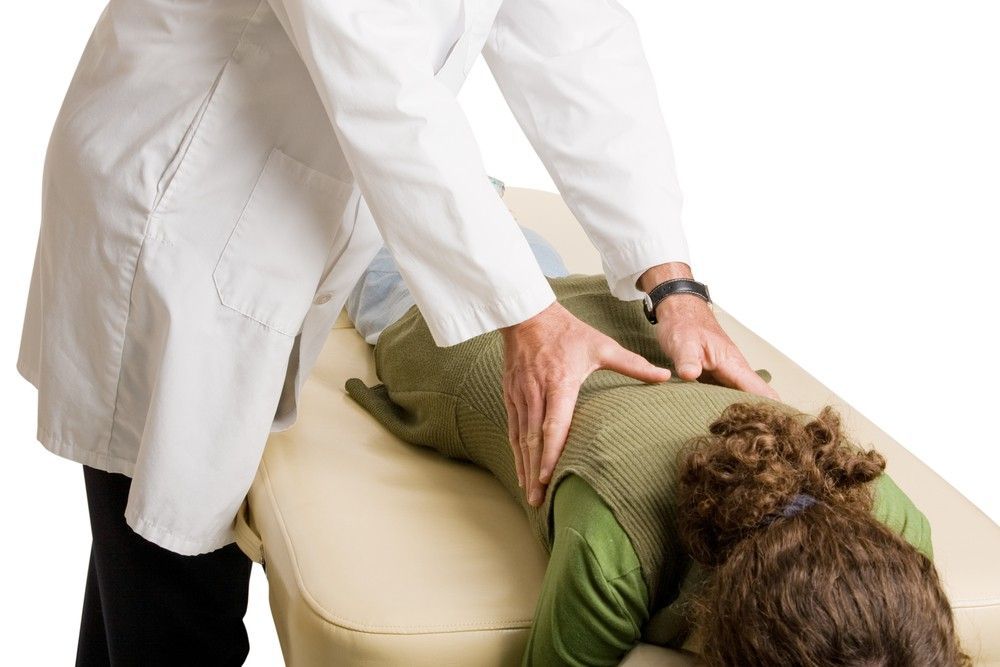Chiropractic Techniques in Townsville
Request a Call Back
Thank you for contacting Mark O'Brien Chiropractic.
We will get back to you as soon as possible.
Oops, there was an error sending your message.
Please try again later.
Chiropractic Techniques We Use
Spinal Alignment. Nervous System Support. Whole-Body Health.
At Mark O’Brien Chiropractic, we offer a tailored approach to spinal care using a range of evidence-informed techniques designed to restore balance, reduce tension and support whole-body wellbeing. With over 25 years of clinical experience, Mark tailors each treatment to your individual needs and goals.
From headaches and fatigue to postural strain, muscular tension or chronic discomfort, spinal misalignments can impact how you move and feel. That’s why our focus is on improving spinal function and nervous system communication—because when the spine works better, the body works better.
We offer personalised chiropractic care for clients of all ages in Townsville and Hughenden. To find out how we can help, call
(07) 4721 1011 and book your appointment.
Torque Release Technique (TRT)
Neurologically-Focused Adjusting for Whole-Body Regulation
TRT is a gentle, neurologically-based technique that targets the nervous system using a handheld tool called the Integrator. This method delivers a fast, specific pulse to spinal points that influence how the brain and body communicate.
Unlike traditional manual adjustments, TRT uses a gentle, targeted approach that works below the surface to reset tension patterns and support healthy nerve function.
TRT may support:
- Stress and anxiety relief
- Nervous system regulation
- Chronic pain
- Sleep or focus challenges
It’s safe for all ages and is commonly used for wellness maintenance and long-term balance.


Sacro-Occipital Technique (SOT)
Low-Force, Whole-Body Balance
Sacro-Occipital Technique (SOT) is a gentle, structured method that targets the relationship between the base of the spine (sacrum) and the base of the skull (occiput). It’s designed to work in harmony with the body’s own rhythms using padded blocks, gravity and slow pressure instead of high-force adjustments.
This technique is used to assess and restore balance across the spine and nervous system. It’s a calming, non-invasive option ideal for clients who prefer a more considered approach to care.
SOT may help with:
- Postural imbalances.
- Migraines and headaches.
- TMJ dysfunction.
- Pelvic pain or misalignment.
- Nervous system sensitivity.
SOT can also include cranial work and is often integrated with techniques like Activator or Thompson Drop-Table for a tailored care plan. It’s particularly suited to people wanting long-term support without intensity.

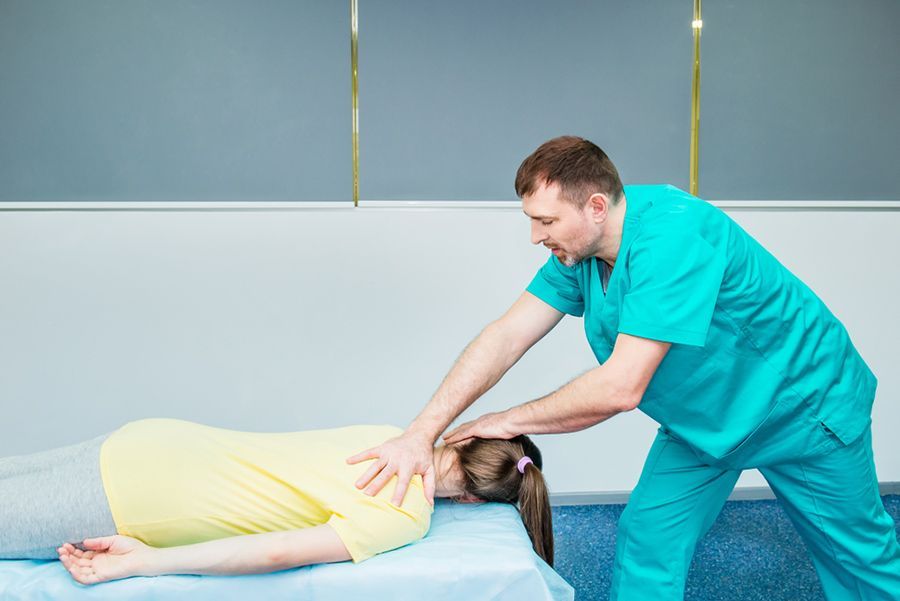
Thompson Drop-Table Technique
Spinal Adjustments Made Comfortable and Precise
Sometimes less force leads to better outcomes. The Thompson Drop-Table Technique uses segmented adjusting tables with drop sections that move with the body to assist spinal correction. Instead of relying on manual force, the table’s mechanics and gravity allow for smooth, controlled, and precise adjustments.
This technique can be useful for clients dealing with:
- Pelvic and lower back discomfort
- Postural misalignments
- General spinal tension
- Movement restrictions
The process is comfortable, specific and allows the chiropractor to isolate joints and correct them without overstressing surrounding tissue. You’ll likely notice improvements not just during the adjustment but in how your body feels afterwards.
Activator Technique
Gentle, Targeted Instrument-Based Adjusting
The Activator Technique uses a handheld instrument to apply a rapid, low-force pulse to specific vertebrae or joints. It’s a smart alternative for clients who prefer to avoid manual manipulation—especially suitable for children, seniors and anyone with sensitive or inflamed joints.
This approach is used to assist with:
- Localised joint stiffness.
- Neck and shoulder tension.
- Headaches linked to stress or posture.
- Precision adjustments in delicate areas like the cervical spine.
The consistent force of the instrument removes guesswork from care. Used alongside assessments and muscle testing, Activator is great for those wanting safe, repeatable results.


Diversified Technique
Manual Adjustments for Improved Alignment
The Diversified Technique is one of the most well-known chiropractic methods. It involves manual spinal adjustments where the chiropractor applies a specific, controlled thrust to restore joint movement and reduce nerve irritation.
It’s a popular choice for:
- Misalignments from everyday stress or activity.
- Neck, back and shoulder strain.
- Muscle fatigue from work or sport.
- Clients who enjoy a dynamic, hands-on approach.
This technique often produces a noticeable release (the classic pop or crack), which many clients find satisfying. It’s also commonly paired with low-force techniques for a balanced treatment plan.
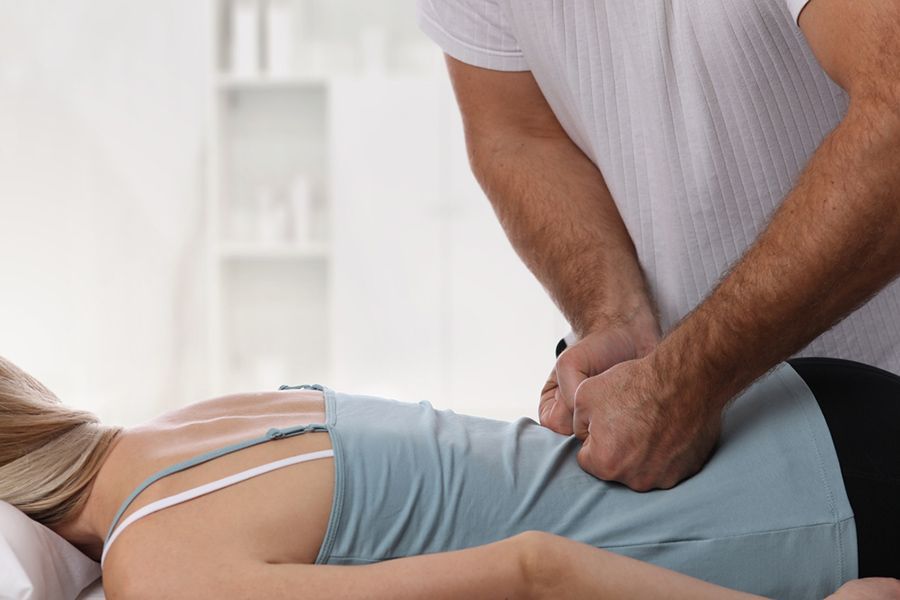

Advanced BioStructural Correction (ABC)
Addressing Deeper Structural Patterns and Postural Strain
Advanced BioStructural Correction (ABC) is a full-body approach that targets deep spinal and postural patterns—especially those caused by long-standing compensation or trauma. It not only addresses visible misalignments but also the body’s hidden reactions to injury or poor posture.
What sets ABC apart is its focus on meningeal tension, which refers to the connective tissues around the brain and spinal cord. By relieving strain here, ABC can help with:
- Breathing or digestion.
- Mental clarity.
- Long-term postural collapse.
- Persistent symptoms that haven’t improved elsewhere.
ABC follows a progressive sequence, helping unwind issues layer by layer. It’s ideal for those seeking a holistic reset that supports whole-body function over time.
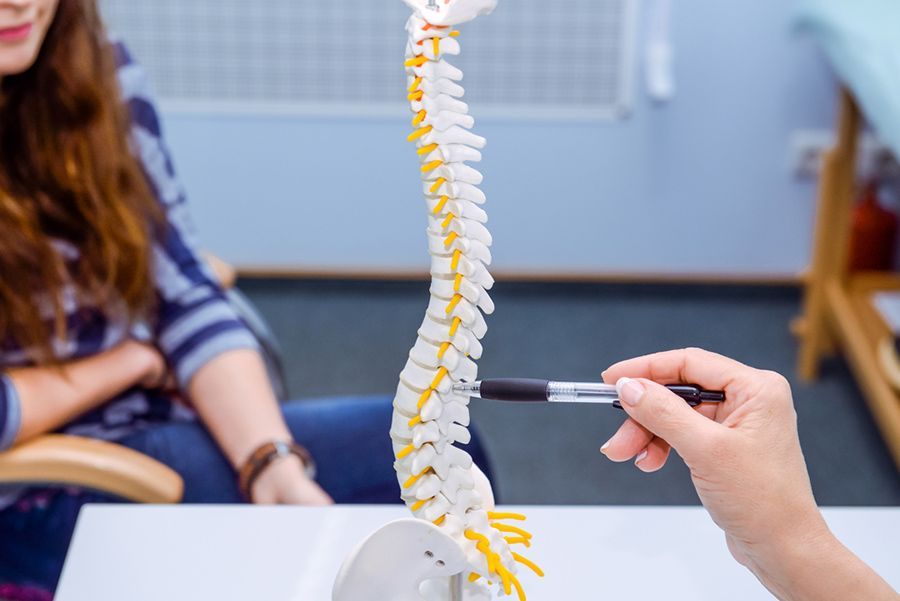

Why Spinal Function Matters
Supporting the Body from the Inside Out
The spine acts as the main pathway for nervous system communication—carrying vital signals between the brain and body. When spinal alignment is disrupted, it can interfere with this flow, leading to discomfort, tension, poor mobility or reduced function.
Chiropractic care helps restore proper movement and alignment in the spine, which in turn supports the body’s ability to heal, regulate and adapt naturally. By reducing interference within the nervous system, chiropractic adjustments can help unlock better energy, posture and overall wellbeing—starting from the inside out.
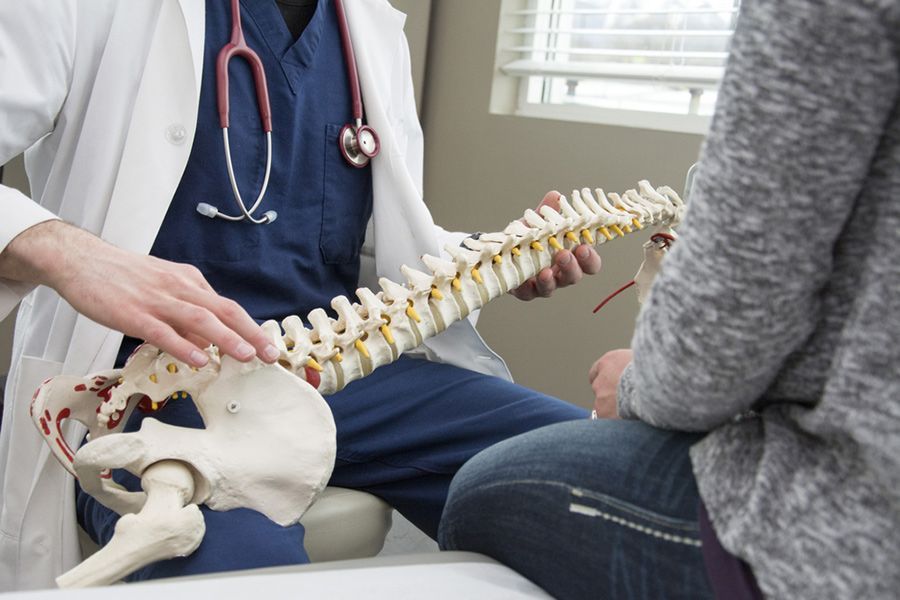
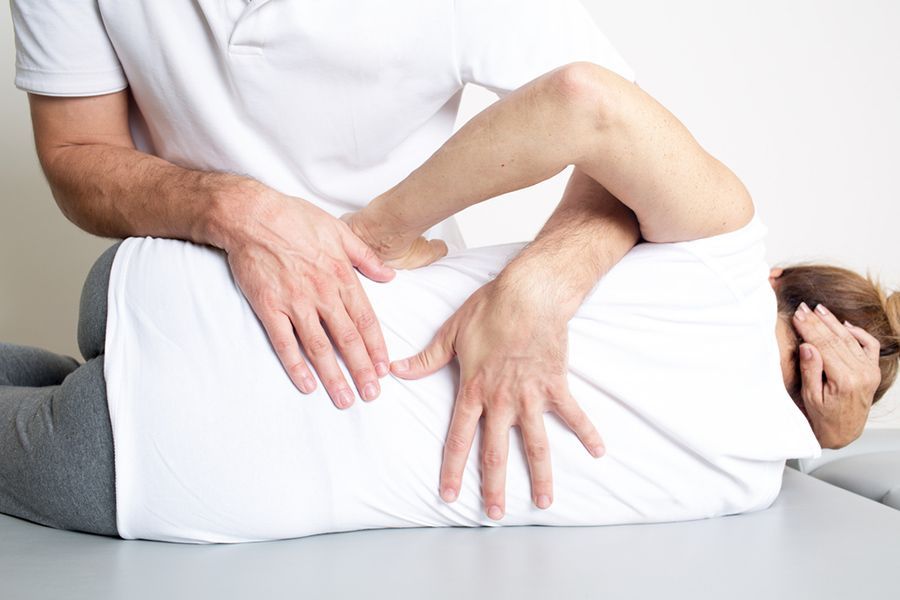
What is the Thompson Drop-Table Technique in chiropractic?
It’s a chiropractic method that uses a specially designed table with segmented pieces that “drop” slightly during an adjustment.
The drops are coordinated with light thrusts from the chiropractor, using gravity and momentum to help realign the spine. This approach minimises overall force and directs the adjustment precisely where it’s needed—making it especially effective for addressing imbalances in the pelvis, lumbar spine and thoracic spine.
Is the Thompson Drop-Table safe for everyone?
Generally, yes. It’s often recommended for people who want a lower-force approach to chiropractic care, including seniors, children and those recovering from injury.
Because the technique doesn’t rely on aggressive movements, it tends to be well tolerated across a wide range of clients. That said, each person is assessed individually to confirm it’s appropriate for their condition and physical structure.
Does the drop in the table hurt?
Not at all. The drop is only a few millimetres and happens in a quick, controlled motion. You’ll hear or feel a small click, but there’s no jarring impact or discomfort.
Most people find it surprisingly gentle—and notice a sense of relief or release right after.
How does the Thompson Drop-Table compare to other chiropractic methods?
It’s more targeted and often more comfortable than traditional manual adjustments. While techniques like Diversified involve hands-on pressure and manipulation, the Thompson method uses precision mechanics to guide the adjustment.
It’s not better or worse—just a different tool in the chiropractic toolkit. For certain bodies and conditions, it can be the perfect fit.
What is the sacro-occipital technique in chiropractic care?
Sacro-occipital technique (SOT) is a method that focuses on the relationship between the sacrum (at the base of the spine) and the occiput (base of the skull). It involves careful analysis and gentle techniques using gravity, soft wedges and cranial work to balance the nervous system.
It’s designed to restore natural posture, reduce pain and improve communication between the brain and body without forceful movements. Chiropractors trained in SOT work with “patterns” of dysfunction—sets of physical signs that help guide precise treatment.
Is SOT safe for people with chronic conditions?
Yes, it’s often recommended for people with long-term or complex conditions because it’s non-invasive and adaptable. SOT doesn’t rely on forceful spinal adjustments, which can be uncomfortable for those with arthritis, fibromyalgia or spinal instability.
It works gently over time to rebalance the body’s structure and nervous system, helping manage symptoms without additional strain.
How long does it take to see results with SOT?
This varies from person to person. Some people notice changes after one or two sessions—especially in areas like posture, muscle tension or head pressure. Others need a longer course of care for structural changes to take hold.
Because SOT focuses on correcting deep patterns, its effects often build gradually and have lasting benefits when care is consistent.
Can sacro-occipital technique help with headaches or TMJ issues?
Yes, particularly when those issues stem from cranial misalignment or pelvic imbalances. SOT includes gentle cranial work that can help reduce tension around the jaw, temples and base of the skull.
It also helps improve spinal alignment, which can take pressure off the nerves and structures connected to those areas. Many people with TMJ dysfunction, migraines or tension headaches find this technique helpful.


